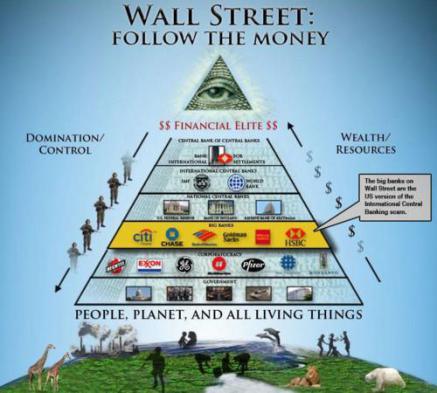Lance Morcan's Blog, page 58
October 5, 2015
Book six in our ‘Underground Knowledge Series’ is dedicated to the impoverished in forgotten places of the world
Our next book, BANKRUPTING THE THIRD WORLD: How the Global Elite Drown Poor Nations in a Sea of Debt, seriously questions whether the World Bank and other big international aid organizations help the world’s poor.
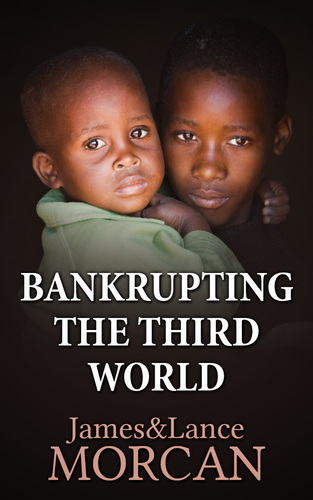
At the outset, we ask: What if much of the aid extended to impoverished nations is not charitable, but selfish, with serious strings attached – strings designed to fleece vulnerable nations?
We also ask: What if the international financial aid organizations are all gigantic scams designed to subjugate Third World countries?
The answers may surprise.
Of all the statistics we uncovered during our research, one in particular has stayed in our minds throughout the writing process:
21,000 people die every day (one person every four seconds) from starvation.
That’s a sickening figure considering our research has also shown there is more than enough wealth in the world for everyone to at least receive the basic necessities of life.
Even more sickening when you consider there is more than enough wealth in the Third World for it to organically sustain itself.
We hope this book will contribute in some small way to the masses pressuring world leaders to eradicate the extreme poverty that sees millions of our fellow Human Beings – men, women and children – dying unnecessarily every year.
Read more in Bankrupting the Third World – https://www.goodreads.com/book/show/26722083-bankrupting-the-third-world – Coming soon!
********************************








September 30, 2015
Snowden, Assange, Manning…traitors or heroes? Interim poll results in!
In the latest poll in our ‘Underground Knowledge’ group on Goodreads.com, we ask members: What is your opinion of whistleblowers like Edward Snowden, Julian Assange and Bradley Manning who leak classified intelligence information to the public concerning their own government’s criminal activities?
Whistleblowers Manning, Assange and Snowden
Interim results show that 68% of poll respondents consider the whistleblowers are heroes; only 10% consider them traitors; some 16% consider them a combination of both traitors and heroes; and 6% are undecided.
Respondents’ comments make for interesting reading. Some of those comments (abridged) follow:
They are both. On one hand they are heroes because they exposed governmental misconduct at personal risk. On the other they are traitors because as government employees they violated an oath and perhaps put some people at risk. What if the military personnel who man the nuclear weapons were given the same freedom to violate their duties? Snowden should be lauded and then put in prison.
These people do the public and their countries a great service which puts themselves in jeopardy!…The three listed above are the ones that stand out most in peoples minds, BUT, there are many others including news reporters who “have accidents” Mike Hastings and Martin Burns being two i know of personally.
The facts could have been shared with Congressmen who write the laws, and could have affected changes these men sought, without compromising the security of this nation or the safety of our people. The Americans are nothing less than traitors and should be shot. Assange has just been exploiting any exposed secrets, to the detriment of any and all nations or people involved.
Risking everything – their jobs/careers, good relationships with colleagues, friends and families, not to mention their own lives! – is something extremely heroic, some might even say foolish. In my opinion though, it shows an extreme level of unrelenting devotion and unbending commitment to one’s principles and morals…
Is it right to rendition and torture people who are innocent, is it right to drone strike civilian targets, is it right to arm train and fund terrorism, is it right to ship major amounts of narcotics into the USA?
NONE OF THAT IS RIGHT!!!
Praise to those who expose it!!
.
Yes, it is the duty of every serviceman or woman to report wrongdoings, and even disobey illegal orders. However, all of the activities divulged were legal under the authorities granted, or they were dealt with using the legal system. Reports must be made through the chain of command, or barring that to the Inspectors General. Neither of those options was chosen.
Contractors hired for wetwork? Yes, very wrong, but not illegal during the Bush/Cheney administrations, because Cheney’s cronies were involved.
.
I don’t think that’s correct, K……. At least some of Assange’s leaks exposed highly illegal activities, for example the footage of helicopter pilots shooting Iraqis for sport including civilians. There were numerous other similar leaks, I’m pretty sure.
.
You can imprison one Manning or Assange, or kill another, but the spirit of whistleblowers is alive and well now and it’s the beginning of the end for the global elite. You cannot kill or imprison them all and what we are seeing so far is literally the first wave of whistleblowers from the military and CIA etc.
To see all the comments, or better still to have YOUR say, go to: https://www.goodreads.com/poll/list/142309-underground-knowledge—a-discussion-group?type=group
Poll ends October 10, 2015.
*
The Underground Knowledge discussion group is open to everyone! All you need is an enquiring mind, an interest in the world we live in and a desire to learn or to uncover “underground knowledge” on important issues of our times. This group is also for like-minded people to discuss the controversial topics explored in The Underground Knowledge Series, which includes the non-fiction books Genius Intelligence, Antigravity Propulsion, Medical Industrial Complex, The Catcher in the Rye Enigma and International Bankster$.
Our members include scientists, journalists, moms and dads, historians, doctors, whistleblowers, authors, bankers, teachers, intelligence personnel, housewives, students, Army vets, pacifists, conspiracy theorists, the odd redneck and the Average Joe. All viewpoints welcome!
To visit the group, go to: https://www.goodreads.com/group/show/142309-underground-knowledge—a-discussion-group
**************************************








September 29, 2015
Bloody clash of First Nations tribes is brought to life in historical novel
In our true-life adventure novel Into the Americas, we relate how young Englishman John Jewitt and his fellow hostage Jonathan Thompson accompany their Mowachaht captors on a raid into the territory of the fierce Haachaht tribe of the Northwest Pacific.
Nootka Sound…Home to the proud Mowachaht tribe of Vancouver Island.
In the following excerpt from our novel, the Mowachaht raiders are ambushed by the Haachahts as they paddle up a river:
Callicum, the Haachaht chief, and three hundred of his warriors waited in ambush in the trees on the far bank. Most wore the distinctive and frightening wolf’s brow-mask, and all carried bows, spears, tomahawks and other traditional weapons. There wasn’t a musket in sight. However, what they lacked in fire-power they made up for in manpower and ingenuity.
On the near bank, directly opposite Callicum and his men, another hundred Haachahts waited. They, too, wore brow-masks and were similarly armed. Within their ranks, two strong, well-built bowmen stood some twenty yards apart. Each held a bow almost as long as himself. Their arrows resembled slim spears and were close to six foot long. A line trailed from each of their shafts. The lines were tied to the front edge of a huge, reinforced fishing net, which lay spread out on the ground between the two bowmen.
Both groups of Haachahts were visible to each other, but the dense undergrowth and foliage still hid them from the raiders even though their canoes were almost level with them.
At a signal from Callicum, the two bowmen opposite lay down on their backs, their knees bent and their moccasined feet raised skyward. After positioning their feet against the inside of their bows, they each loaded a long arrow and prepared to loose it toward the opposite bank. Even though they each used both hands to draw the mighty bows, the tremendous effort required caused their muscular arms to tremble. Their eyes were focused on a headman who stood midway between them and whose eyes, in turn, were focused on Callicum on the opposite bank.
The Haachaht chief now had his tomahawk raised high above his head. As the lead canoe drew level with his position, Callicum brought his tomahawk down.
At a nod from the headman opposite, the two bowmen gratefully released their long arrows in synch. Nearby, two more bowmen prepared to send a second net toward their enemies.
In the lead canoe, John and his fellow paddlers looked up as the huge net sailed above them, trailing behind the two spear-like arrows. The arrows buried themselves in the ground on the opposite bank and the net slowly floated down. It narrowly missed the lead canoe, settling over the one following and entangling its occupants.
Terrifying Haachaht war cries shattered the silence, and arrows and spears rained down on the Mowachahts. Most of those entangled in the net were quickly struck down as they struggled to disentangle themselves. Several scrambled overboard and tried to swim downstream, but they were quickly picked off by well-placed arrows. The canoe’s captain, Quasoot, was among the casualties.
The Mowachahts’ first thought was to use their muskets to fight off their enemies. They instinctively discarded their paddles and frantically began priming their muskets. As a result, the canoes bumped into each other and began drifting aimlessly in the current, their surprised occupants sitting targets.
Callicum had anticipated this and urged his bowmen to pick the disorganized Mowachahts off before they could wreak havoc with their muskets.
Maquina saw the danger immediately and exhorted his warriors to forget about their muskets for the moment and to paddle to the left bank where Callicum and his warriors happened to be. They responded straight away, retrieving their paddles and paddling furiously.
At the same time, another net sailed over the river and settled on a second canoe – this one captained by Toowin. Fortunately for Toowin and his fellow paddlers, one of the two arrows used had been misdirected, and so the net didn’t completely envelope the craft. Even so, the disruption it caused resulted in at least half the canoe’s occupants being killed or wounded. Toowin himself suffered a flesh wound when an arrow creased his chest.
As the remaining canoes closed with the far bank, they were met by a hailstorm of spears and arrows. Callicum’s warriors were trying to finish their enemies off before they could reach the shore. Mowachaht casualties mounted. Some of those who had been killed floated off downstream with arrows, and in one case a spear, protruding from them. Blood stained the water around them.
For one long moment, Maquina’s eyes locked with Callicum’s. The Mowachaht chief stood upright in the prow of his canoe. Ignoring the arrows that flew around him, he cursed his opposite. “Callicum, you treacherous dog!” he shouted. “I will personally cut out your heart!”
Callicum shouted something unintelligible back at his opposite.
Maquina was first to disembark. With no apparent concern for his own safety, he ran directly at Callicum, musket in one hand and club in the other. He used the latter weapon to effortlessly swat aside two Haachahts who made the mistake of not getting out of his way.
John and Thompson were among the next to disembark. As they scrambled up the bank, they fired their muskets at near point-blank range at the nearest Haachahts. Their hands were a blur as they primed their muskets and fired again. Identifying their enemy was made easy by the wolf brow-masks most of the Haachahts wore.
In anticipation of close-quarter fighting, Maquina had wisely ordered his fellow raiders to use shot, or pellets, as opposed to musket balls. John and Thompson were thankful for that as they loosed shot after shot at their enemies: each shot felled two or more Haachahts, so tightly were they congregated and so effective were the deadly pellets directed their way.
The whites were quickly joined by their fellow raiders who brought their own muskets into play. More Haachahts were struck down.
Chaos reigned. War cries, musket shots, curses, agonized screams, shouted orders and insults mingled in one deafening cacophony of sound; smoke from the constant discharge of muskets hung in the air, its acrid smell instantly recognizable; spears, arrows, tomahawks, axes and knives flew through the air as warriors grappled with their enemies in the woods, along the riverbank and even in the river; and all the while bodies piled up along the bank and in the shallows, and still more floated downriver.
You have been reading an excerpt from INTO THE AMERICAS (A novel based on a true story). The book is available on Amazon: http://www.amazon.com/Into-Americas-novel-based-story-ebook/dp/B00YJKM51E/

*********************************








September 28, 2015
Wanna know who’s manipulating the financial markets behind the scenes? Follow the money!
INTERNATIONAL BANKSTER$: The Global Banking Elite Exposed and the Case for Restructuring Capitalism, book five in our Underground Knowledge Series, identifies who is responsible for the gigantic financial gulf that separates the top 1% of the population from the common people, or the 99%.
The financial overlords illuminated in INTERNATIONAL BANKSTER$ include the powerbrokers at Wall Street banks, European central banks, the US Federal Reserve and the Vatican Bank, as well as elite banking dynasties such as the Rothschild and Rockefeller families.
This new release book discloses the real reasons for the series of recent financial crises. These reasons include: the secret world of “black money” and Old World money where most assets and income remain undeclared; the central banking system and the true nature of the Federal Reserve; the less-than-holy financial activities of the Vatican; the IMF and World Bank’s sometimes less-than-charitable dealings with the Third World; the austerity measures currently being inflicted on vulnerable nations like Greece; as well as the theory that the world’s money supply is essentially being created out of thin air.
Beyond identifying the problems and exposing corruption, INTERNATIONAL BANKSTER$ proposes ideas for creating a fairer economic system. These ideas include: publicly owned banks; utilizing certain aspects of Islamic banking which may be compatible with Western banking systems; exploring whether capitalism and socialism can actually work in tandem; arguing the case to maintain but restructure capitalism; considering the merits of a universal income; and predicting how cybermoney, or cryptocurrencies, will influence the world economy in the coming years.
Though the subjects covered may be monetary issues, that’s on the surface only. In reality, they are humanitarian issues. As the authors state in the book’s opening pages, “Starving the masses of financial opportunities, sinking them in debt and cheating them out of various services their taxes should pay for, are among the greatest sins those in power can commit.”
As governments around the world continue to bail out privately-owned banking institutions ahead of rescuing the millions of citizens facing bankruptcy and eviction from their homes, INTERNATIONAL BANKSTER$ is a timely read.
INTERNATIONAL BANKSTER$ is available exclusively on Amazon: http://www.amazon.com/INTERNATIONAL-BANKSTER-Restructuring-Capitalism-Underground-ebook/dp/B015QN5RTY/
*************************************
September 27, 2015
Taking on Big C with Vitamin C
It seems mainstream medicine won’t accept that high doses of Vitamin C may be an effective anticancer agent – this despite the fact that there have been some incredible success stories of late. We explore this in our book MEDICAL INDUSTRIAL COMPLEX: The $ickness Industry, Big Pharma and Suppressed Cures.
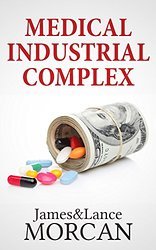
The following excerpt from Medical Industrial Complex includes a couple of examples, which, to our eyes at least, warrant the medical authorities taking a closer look at the use of Vitamin C to combat cancer:
On October 12, 2014, Television New Zealand’s ‘Sunday’ current affairs program advised viewers that ground breaking research at Otago University had revealed Vitamin C may be a useful tool in cancer treatment.
The report states, “Professor Margreet Vissers has told the Sunday Programme Vitamin C is unlikely to provide a miracle cure. However it could be used alongside other therapies. ‘We think Vitamin C is potentially another tool in the toolbox of anti-cancer treatments.’
“Lab tests at Otago showed tumours with higher levels of Vitamin C were less aggressive and slower to grow than ones with lower levels of the vitamin. A number of doctors around the country have been running centres which offer the treatment to patients as an alternative or a complement to chemotherapy and radio therapy. They are using high level doses of Vitamin C by intravenous infusion to attack the tumours”.
Vissers also says, “What we want to find out…is if we increase the amount of Vitamin C is that going to slow the tumour growth as well? We suspect it will”.
On May 6, 2014, under the heading ‘Taking on Big C with Vitamin C,’ the New Zealand newspaper The Northern Advocate reported on the incredible case of policeman Anton Kuraia, a family man and cancer patient “who was given only weeks to live” after unsuccessful chemotherapy.
The article reads, “The medical experts described it as ‘wall to wall’ cancer and after two months of intensive chemotherapy there was little improvement. Anton Kuraia was sent home from hospital with weeks to live and told he would slip into a coma and die.
“The 43-year-old Whangarei policeman and father of three was left shattered and broken. ‘I remember asking my oncology doctor if there was anything I could do, anything at all. But it was made clear that there were no other options and that certain death would be upon me’.”
The article continues, “Anton got on the internet and googled vitamin C”.
Anton is quoted as saying, “I naturally looked into high dose vitamin C, therapies and supplements on the other side of the pharmaceutical fence. Why is it that we call everything that isn’t conventional medicine ‘alternative’? When you reflect on the simple methodology of alternatives you soon discover that the term ‘naturals’ is a clearer description. Naturals support, detoxify and gently encourage the body to create an environment in which cancer struggles to survive.”
Apparently, Anton’s diet was given a major overhaul, with sugar being a definite no-go food.
“Fresh vegetable and fruit smoothies became the order of the day as he followed a blood type diet. The high dose liquid form of vitamin C is 90g of clear liquid taken intravenously to bypass the gut…The sessions cost $200 each.
“After 10 weeks of healthy eating and infusions – two weeks longer than experts had predicted he would live – Anton was feeling better and agreed to have a bone marrow biopsy. The results revealed the cancer had dwindled to less than one per cent. The cancer was in complete remission”.
____________________________________
“Each patient carries his own doctor inside him.” –Norman Cousins, Author of Anatomy of an Illness
____________________________________
It’s abundantly clear not everyone agrees that Vitamin C may be an effective anticancer agent. On its website, the American Cancer Society states, “Clinical trials of high doses vitamin C as a treatment for cancer have not shown any benefit.” And it warns, “High doses of vitamin C can cause side effects in some people”.
To be fair, high doses of anything can cause side effects – even death – if consumers overdo it. (Try eating a truckload of apples and see how you feel).
However, the American Cancer Society’s point is taken: high doses of Vitamin C can cause side effects and, it seems, the jury’s still out on the effectiveness, or otherwise, of this vitamin as an anticancer agent.
The society does acknowledge that “Some claim that the vitamin can prevent a variety of cancers from developing, including lung, prostate, bladder, breast, cervical, intestinal, esophageal, stomach, pancreatic, and salivary gland cancers, as well as leukemia and non-Hodgkin’s lymphoma. Vitamin C is also said to prevent tumors from spreading, help the body heal after cancer surgery, enhance the effects of certain anti-cancer drugs, and reduce the toxic effects of other drugs used in chemotherapy”.
And while the society acknowledges that “people with higher blood levels of vitamin C tend to have a lesser risk of developing cancer than do people with lower levels,” it categorically states, “Studies that observed large groups or people and clinical trials of vitamin C supplements have not shown the same strong protective effects against cancer”.
The American Cancer Society also quotes a 2000 National Academy of Sciences report as saying, “There is not enough evidence to support claims that taking high doses of antioxidants (such as vitamins C and E, selenium, and beta carotene) can prevent chronic diseases”.
Certainly, some doctors recommend high doses of vitamin C supplements to protect patients against, and to treat, the common cold. However, it does seem that few doctors are prepared to accept that high doses of Vitamin C may be an effective anticancer agent.
TBC…
You have been reading an excerpt from Medical Industrial Complex. This top rating book is available on Amazon: http://www.amazon.com/MEDICAL-INDUSTRIAL-COMPLEX-Suppressed-Underground-ebook/dp/B00Y8Y3TUM/
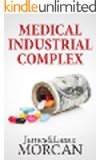
***************************************************
September 25, 2015
Poll result shows most believe global financial aid organizations hinder Third World nations
To assist our research for Bankrupting the Third World, the next planned book in our Underground Knowledge Series, we asked members of our ‘Underground Knowledge’ group on Goodreads.com the following question: Do you believe global financial aid institutions such as the World Bank, the IMF and USAID primarily help or hinder Third World nations?

Cover reveal for:
BANKRUPTING THE THIRD WORLD: How the Global Elite Drown Poor Nations in a Sea of Debt
Unsurprisingly, interim poll results show that 67% of respondents believe the big global aid organizations are more a hindrance than a help to Third World nations; only 4% believe they’re a help; and the balance are unsure.
Poll respondents’ comments make for interesting reading. Examples follow:
If the leaders of the developed countries wanted to help the people from the third world countries, they should have done it years ago without hesitation.
They are almost entirely funded by the U.S. taxpayers, and I want my money back! The design and build of their headquarters also cost a darn fortune!
World Bank, IMF, USAID are basically tools of the US Government and weapons used to blackmail third world countries.
It’s a case of too many (greedy) cooks in the kitchen.
Their primary interests is themselves. Third world nations are there to be exploited by them for resources. Obviously, they would like all to be third world nations!
It is simple they help by bailing out nation but these nations typically have no way of repaying theses loans and default on them, which is the hindrance.
Dirty water, barren land, land stolen for rubber plantations and GMO crops, keep the Africans and others hungry.
To read all comments, or better still to have YOUR say, go to: https://www.goodreads.com/poll/list/1...
This upcoming book can be viewed on Goodreads at:
https://www.goodreads.com/book/show/26722083-bankrupting-the-third-world
“Western governments tax their citizens to fund the World Bank, lend this money to corrupt Third World dictators who abscond with the funds, and then demand repayment which is extracted through taxation from poor Third World citizens, rather than from the government officials responsible for the embezzlement. It is in essence a global transfer of wealth from the poor to the rich. Taxpayers around the world are forced to subsidize the lavish lifestyles of Third World dictators and highly-paid World Bank bureaucrats who don’t even pay income tax.” -Ron Paul’s statement at the World Bank Hearing, May 22, 2007
************************************
September 23, 2015
‘INTERNATIONAL BANKSTER$: The Global Banking Elite Exposed and the Case for Restructuring Capitalism’
There’s a growing awareness in the general population of large-scale financial corruption by the global elite, or the 1%, if you will. This motivated us to write about it — INTERNATIONAL BANKSTER$, book five in The Underground Knowledge Series, has just been released on Amazon.
The Introduction from this book follows:
Since the Global Financial Crisis of 2007-2008, many people around the world have been questioning whether there are certain figures or groups manipulating financial markets behind the scenes.
This speculation intensified with the ensuing government bailouts of privately owned banking institutions ahead of the millions of citizens facing bankruptcy.
As a result, many in the West now regularly second-guess their governments and assess any “financial relief packages” or “economic stimulus plans” with a high degree of suspicion and cynicism.

Occupy Wall Street protestors show what they think of a corrupt economic system.
What certain corrupt politicians and so-called business leaders may have overlooked is that the public are not stupid, and what the average person lacks in specific knowledge of financial markets they make up for in spades with street smarts and life experience. That and the masses have finally caught on to what has been going on for decades, if not centuries, with the money men of the world.
There’s a growing awareness in the general population of large-scale financial corruption by the global elite, or the 1%, if you will.
Surveys have also shown that a big percentage of the public feel they’re being manipulated by corporations, banks, international interests and the media as well as by politicians who appear to have less respect for voters than ever before.
It’s almost as if the public sense there must exist within government little-known powerbrokers who are not for the people, but actually against them. Powerbrokers who are essentially thieves operating in the shadows and getting richer and richer at the expense of the average citizen.
Let’s face it, it’s a really perverse world where we have almost unlimited military expenditure to finance wars, where our governments readily bail out privately-owned banks with multi-trillion dollar relief packages, and yet politicians tell us there is not enough money to cover the measly costs of our own citizens’ basic healthcare, food, education and shelter.
As to the question of who is responsible for this gigantic financial inequity, the prime suspects are the banking elite who are clearly some of the most powerful and influential people on the planet. They shape the modern world far more than politicians do in our opinion. After all, money can buy administrations. Some would even argue money can buy elections as well.
As a result of the public waking up to these sophisticated undercurrents beneath the surface of almost every major financial fraud, bankers are now held in about as high regard as criminal defence lawyers, used-car salesmen, debt collectors, arms traders and even drug traffickers.
We trust all this justifies our usage of the word bankster to describe throughout this book the morally questionable banking profession. Bankster, by the way, is a portmanteau or blend word derived from combining “banker” and “gangster”. Its plural form, “banksters,” refers to the commonly acknowledged predatory element operating within the financial sector.
We should point out, however, that whenever we use the term bankster it always denotes a high-level banker holding a senior position in the likes of major Wall Street banks, the Vatican Bank, the US Federal Reserve or the World Bank. So rest assured, the bank manager at your local branch is not (usually) a “bankster” and is unlikely to have been associated with any of the explosive financial crimes mentioned in this book.
This book is divided into two sections. Part One outlines the problems we’ve identified in banking and finance, while Part Two proposes possible solutions.
The first section is necessary because in order to consider solutions the problems must first be identified and dissected. Many books in this “exposing corruptions” genre offer no solutions to the problems; we hope you will agree that INTERNATIONAL BANKSTER$ is not one of those.
In Part One, titled The Financial Overlords, we cover many of the major financial issues the world is enduring right now. Subjects include: the secret world of “black money” and the elite banking dynasties; the central banking system and the true nature of the US Federal Reserve; the less than holy financial activities of the Vatican Bank; the IMF and World Bank’s sometimes less-than-charitable dealings with the Third World; the austerity measures currently being inflicted on vulnerable nations like Greece; as well as the theory that the world’s money supply is essentially being created out of thin air.
In Part Two, titled Potential Solutions, we propose ideas for creating a fairer economic system. These ideas include: publicly owned banks; utilizing certain aspects of Islamic banking which may be compatible with Western banking systems; exploring whether capitalism and socialism can actually work in tandem; arguing the case to maintain but restructure capitalism; and predicting how cybermoney, or cryptocurrencies, will influence the world economy in the next few years.
We view the subjects covered in this book as being monetary issues on the surface only. In reality, they are humanitarian issues.
There’s more than enough money to feed these starving kids…So why are they starving?
Starving the masses of financial opportunities, sinking them in debt and cheating them out of various services their taxes should pay for, are among the greatest sins those in power can commit. These sins result in widespread poverty, unemployment, increased crime rates, homelessness, drug addiction, overcrowded prisons and a whole host of other social problems.
We hope this book will contribute to the growing awareness in the mass populace that there is, contrary to what the Establishment tells us, enough wealth in the world to fix most of the biggest challenges our planet is currently facing.
You have been reading an excerpt from INTERNATIONAL BANKSTER$. To read more go to Amazon: http://www.amazon.com/INTERNATIONAL-BANKSTER-Restructuring-Capitalism-Underground-ebook/dp/B015QN5RTY/
*************************************
September 21, 2015
Conspiring to quash alternative medicines
“If the Medical Industrial Complex is the Devil in healthcare, then natural or alternative medicine would probably be God.” Thus begins a chapter we devote to alternative medicines in our book MEDICAL INDUSTRIAL COMPLEX: The $ickness Industry, Big Pharma and Supressed Cures.
Natural medicine… Sounds like an oxymoron doesn’t it? Given the dictionary interpretation of medicine is drug or medication, little wonder natural medicine sounds contradictory. However, it’s no secret that natural medicine – like alternative health – is (once more) a widely used, well understood term and is a practice that has legions of followers the world over. And those legions are increasing – much to the consternation of mainstream medicine…
The following excerpt from Medical Industrial Complex addresses this contentious issue:
If the Medical Industrial Complex is the Devil in healthcare, then natural or alternative medicine would probably be God.
Natural medicine… Sounds like an oxymoron doesn’t it? Given the dictionary interpretation of medicine is drug or medication, little wonder natural medicine sounds contradictory. However, it’s no secret that natural medicine – like alternative health – is (once more) a widely used, well understood term and is a practice that has legions of followers the world over. And those legions are increasing – much to the consternation of mainstream medicine.
Many in the medical fraternity instantly label treatments in the traditional, natural or holistic health fields as quackery. This word is even used to describe Traditional Chinese Medicine (TCM) and the Indian Ayurveda – two medical systems which are far older than Western medicine and globally just as popular.
One sign that the Medical Industrial Complex may view natural or alternative medicine as a financial threat is the sweeping law changes it has forced upon the alternative health market in recent years.
___________________________________
“The doctor of the future will give no medication, but will interest his patients in the care of the human frame, diet and in the cause and prevention of disease.” –Thomas Edison
___________________________________
Today, most nations now have laws requiring any health substance with medicinal claims to be legally defined as “drugs.” This includes herbal remedies and various other non-drug medicines of natural origins. Critics say such laws prevent wider distribution of natural health products and give Big Pharma ever more control.
In the US, these laws are monitored by the FDA (the Food and Drug Administration), an organization which critics argue is at the very top of the Medical Industrial Complex. That’s right folks, the same FDA that allows genetically-modified Monsanto organisms in your food supply and the same FDA that allows your kids to consume Aspartame in soft drinks is the organization responsible for telling Americans how they can and cannot treat their illnesses.
It has been repeatedly argued by natural health proponents that major pharmaceutical companies, along with their supportive cronies in government, conspired to pass these laws to force the public to only use modern medicines that are pharmacological, patented or patentable, and profitable.
Call us crazy, but we think any product with 100% natural and non-synthetic ingredients such as those derived from the likes of herbs, flowers, fruits and roots should be in a totally separate category to synthetic, laboratory-made pharmaceutical drugs.
____________________________________
“We each have the innate ability to heal ourselves. To empower ourselves with natural solutions, instead of succumbing to life-altering chemicals. There’s a time and place for pharmaceuticals, but it shouldn’t be the first answer, nor the only form of treatment.” –American wellness coach and author Dana Arcuri
____________________________________
Many alternative health researchers also claim that little funding is granted for research into natural or traditional cures because Big Pharma cannot patent plants or anything else that occurs organically in nature.
One such example is the work of high-profile American chemist and Nobel Prize recipient Linus Pauling (1901-1994). He received no support from the medical establishment for radical health discoveries (he claimed) he discovered when experimenting with mega-doses of Vitamin C. Despite his illustrious credentials, Pauling was also labeled a quack for his claims that the natural, unpatentable Vitamin C could cure a whole host of diseases, including cancer.
However, it appears Pauling may have the last laugh, albeit posthumously. Several high profile studies in the last few years suggest his theories on high dose Vitamin C being an effective anticancer agent may indeed be correct.
America’s National Cancer Institute (NCI) provides a brief history of the use of high-dose Vitamin C as a complementary and alternative treatment for cancer on its website, pointing out that “High-dose vitamin C has been studied as a treatment for patients with cancer since the 1970s”.
NCI states, “A Scottish surgeon named Ewan Cameron worked with…Linus Pauling to study the possible benefits of vitamin C therapy in clinical trials of cancer patients in the late 1970s and early 1980’s” and “In the 1970’s, it was proposed that high-dose ascorbic acid could help build resistance to disease or infection and possibly treat cancer”.
Interestingly, the institute concedes, “Laboratory studies have shown…treatment with high-dose vitamin C slowed the growth and spread of prostate, pancreatic, liver, colon, malignant mesothelioma, neuroblastoma, and other types of cancer cells,” and “combining high-dose vitamin C with certain types of chemotherapy may be more effective than chemotherapy alone”.
NCI refers to another laboratory study that “suggested that combining high-dose vitamin C with radiation therapy killed more glioblastoma multiforme cells than radiation therapy alone”.
The institute advises that “The FDA has not approved the use of high-dose vitamin C as a treatment for cancer or any other medical condition” and “Because dietary supplements are regulated as foods, not as drugs, FDA approval is not required unless specific claims about disease prevention or treatment are made”.
However, it seems the door remains open at least. As NCI concedes, “More studies of combining high-dose IV vitamin C with other drugs are in progress”.
TBC…
You have been reading an excerpt from Medical Industrial Complex. This top rating book is available on Amazon: http://www.amazon.com/MEDICAL-INDUSTRIAL-COMPLEX-Suppressed-Underground-ebook/dp/B00Y8Y3TUM/

*************************************








September 17, 2015
Poll respondents say all animals should be classed as sentient – i.e. ‘emotional’ and ‘with feelings’
Do you believe ALL animals should be classified by law as Sentient Beings? That’s the question we put to members of our Underground Knowledge group on Goodreads.com – and interim results show nearly three-quarters of poll respondents voted a resounding YES!
“Hey listen up…I got feelings too, Bud!”
To date, 74% of respondents say Yes; some 18% say No; and 8% are Unsure.
The poll was inspired by New Zealand’s recent decision to classify all animals as sentient beings, thereby making it illegal to kill, harm or experiment on any animal.
Greeting New Zealand’s new Animal Welfare Amendment Bill, the activist site TrueActivist.com welcomed the news as “a landmark decision by the Kiwis (that) sets a precedent that other countries should follow”.
True Activist states:
New Zealand has just set a great example to the world by recognizing what animal lovers have known forever- that our furry friends are as sentient as we are, and (obviously, dur) they have feelings just like we do. It’s a theme we have covered time and again here at True Activist, but this landmark ruling by NZ is the first time this shift in perception and policy has been extended to all animals, not just chimpanzees, orangutans, or dolphins.
To read the full article go to: http://collectivelyconscious.net/articles/new-zealand-now-recognizes-all-animals-as-sentient-beings/
And to read what our Underground Knowledge group poll respondents have to say, or better still to have YOUR say, go to: https://www.goodreads.com/poll/list/142309-underground-knowledge—a-discussion-group?type=group
Poll ends September 28.
#
Our Underground Knowledge discussion group is aimed at those with an interest in the world we live in and a desire to learn or to uncover “underground knowledge” on important issues of our times.
Everyone’s welcome to join! All you need is an enquiring mind and a desire to learn. Our members include scientists, social activists, teachers, historians, authors, former military and intelligence agency personnel, bankers, housewives, whistleblowers, students, former police officers, journalists, readers and many more.
Visit the Underground Knowledge discussion group at: https://www.goodreads.com/group/show/142309-underground-knowledge—a-discussion-group
**************************************








September 13, 2015
‘Genius Intelligence’ book on special this week only!
GENIUS INTELLIGENCE: Secret Techniques and Technologies to Increase IQ, book one in our Underground Knowledge Series, is on special this week at only 99cents via Kindle.
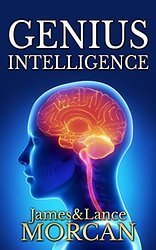
The price reduction coincides with the book returning to Amazon’s bestseller lists in the popular Experimental Education category
Among the discoveries we share with readers are brain waves common to geniuses and the various ways to induce those brain waves; mental techniques the world’s elite and A-List celebrities are quietly using to help them process information while they’re asleep or in virtual worlds; chemical substances students and academics the world over employ to kick-start the brain into overdrive; and cutting-edge technologies business tycoons and professional athletes employ to gain a cerebral edge over their competitors.
Drawing on the latest findings in neuroscience, Genius Intelligence lists dozens of practical methods to increase IQ and speed-learn any subject.
Here’s what one Amazon reviewer has to say about this book:
★★★★★ “A terrific cornucopia and discussion of techniques to enhance IQ. The discussion of learning methods is sweeping, and runs the gamut from speed-reading, brainwave entrainment, sleep-learning, brain gland activation, to the more exotic virtual reality, superluminal particles, Ormus, sensory deprivation, high-IQ diet, smart drugs, meditation & yoga, midbrain activation, and hypnosis.” –George Shaddock, editor/publisher (Founder of London Circle Publishing)

To learn more about Genius Intelligence go to: http://www.amazon.com/GENIUS-INTELLIGENCE-Techniques-Technologies-Underground-ebook/dp/B00QXQQWXO/
******************************************************







































